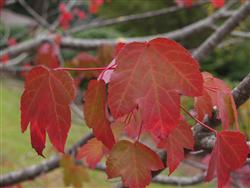 Understand the principles and practices of plant physiology and their practical applications.
Understand the principles and practices of plant physiology and their practical applications.
This course is concerned with the structure of plants and the way in which structures develop throughout a plants life from one stage of growth to the next. These stages include juvenility, maturity, flowering and seeding. Plant development involves differentiation of the plant into specialised parts. This may include visible changes such as the structural organisation of the plant and new patterns of growth as well as less visible changes such as localised biochemical and metabolic activity.